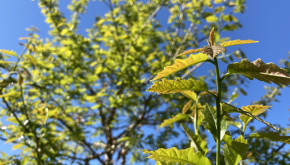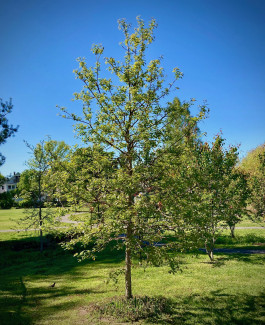
Planting a hard mast species is a great way to add beauty to your property and improve its value for wildlife. And in the midst of the COVID-19 pandemic, it can be a welcome diversion to get your hands in the dirt and establish new plant life in your backyard.
This activity is drawn from the Maine Forest Service’s forthcoming 2nd edition of its popular 1999 publication, “The Woods in Your Backyard.” Courtesy of the Maine Tree Farm Committee and the Maine Forest Service.
Mast is the botanical term for the nuts, seeds, or fruits of trees and shrubs that are eaten by wildlife. Hard mast includes nuts and seeds such as acorns, hickory nuts, and walnuts. Mast trees can serve as a food source for wildlife while providing you with many other benefits. Planting a mast tree in your yard can provide you with shade on hot summer days and can help beautify your property. Although there are many species that can be planted to provide food for wildlife, planting a native species is the best option for wildlife and for optimal tree growth. In the Northeast, northern red oak grows well, has red leaves in the fall, and produces nutrient-rich acorns. Shagbark hickory, black walnut, and disease-resistant chestnuts are other good options. Visit your local garden center to check out some native mast-producing species, and don’t forget to have fun planting your tree with family.
Read further for instructions on selecting a planting site, choosing a tree, planting, and caring for your new tree.
And stay tuned for the new, 2020 edition of The Woods in Your Backyard in late summer!



